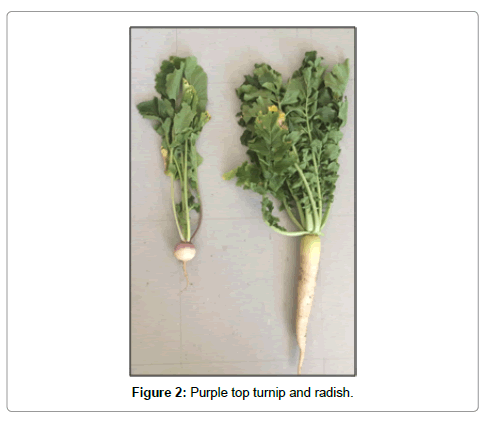Cover Crops, More than Just a Weed
Received: 02-Dec-2014 / Accepted Date: 02-Jan-2015 / Published Date: 05-Jan-2015 DOI: 10.4172/2329-8863.1000157
403385As we look back on 2014, there were many new advancements made in agriculture. From EPA approvals of certain Biotechnology traits to new ways of farming, one seemed to stand out among the rest; cover crops. Cover crops were a big buzz word this year and last year. With some farmers and ranchers who had planted turnips for years it made sense but to others who always wanted a clean field, it seemed counterproductive. It wasn’t until people like Ray Ward, Dave Brandt, and Gabe Brown, started telling their stories that it finally started to make sense. They were able to show the improvements that it made to their operations and to their bottom line. Cover crops can do many things; they can provide nutritious feed to livestock, build healthier soil, and leave nutrients in the soil to be used by next year’s crop. Cover crops have the ability to not only help you spend less on inputs, but also build a healthier, more alive soil, that will pay dividends for years to come (Figure 1). One of the first hurdles is to decide on what type of mix you would like to use. Some things to keep in mind are to understanding your final goal and how each variety of cover crops will help you reach that goal When deciding on your mix, you need to decide whether you want annuals or perennials, legumes or grasses, biomass or cover, warm or cool season, native or nonnative; the choices are truly endless. One of the most important things to remember is to know what type of chemical you put on in the spring as your Pre and Post, and how long its residual or planting restrictions are. One thing to note here is that NO HERBICDE LABEL has been written with cover crops in mind. It’s far too expensive for chemical companies to do the research necessary and take the time to relabel everything so be aware of the chemical you use. The next step is to decide how it will be seeded. There are many options; the best is to plant it, which is done in most of the wheat stubble or short season beans, or flown or spun on either standing corn or beans. When it comes to timing, you are generally safe when it comes to corn or wheat stubble, but when it comes to beans, timing is critical. Cover crops need to be seeded before the leaves start to fall or the seed will not have the soil contact it needs to germinate (Figure 2). There may be a lot of choices, but a good cover crop to start out with is rye. Rye is sometimes called a gateway plant and because it will give you the benefits needed to take the next step to add turnips and/or radishes to the mix. From there, you can add or subtract different plants and really create a custom mix that is designed for your farm. No matter what you’re using the cover crop for or how many species you have in a mix, just getting started is a step in the right direction.
Citation: Lovgren D (2015) Cover Crops, More than Just a Weed. Adv Crop Sci Tech 3:157. DOI: 10.4172/2329-8863.1000157
Copyright: © 2015 Lovgren D. This is an open-access article distributed under the terms of the Creative Commons Attribution License, which permits unrestricted use, distribution, and reproduction in any medium, provided the original author and source are credited.


